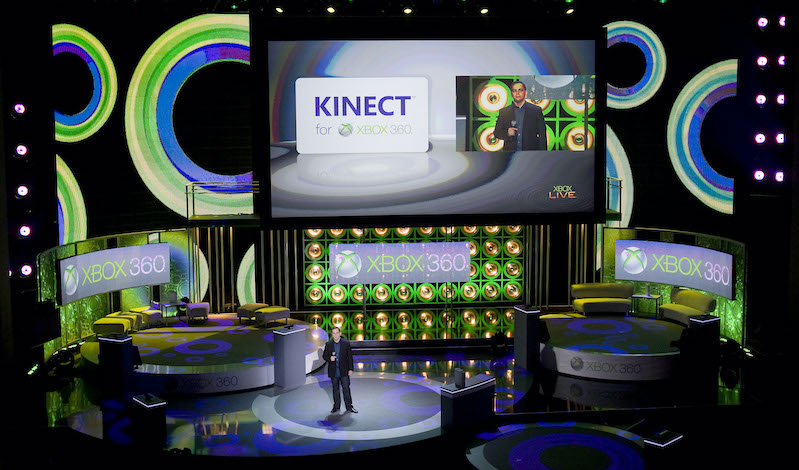
In-depth course module opens the door for law students to the increasingly vital world of voluntary standards.
Standard essential patents, once mainly the province of engineers, are increasingly central to the work of intellectual property lawyers. These patents have in recent years become the center of massive litigation between major companies such as Samsung, Apple, Microsoft, and Motorola, among others.
Today, any lawyer—or law student—interested in working with clients in the technology sector must understand the issues that arise when patents are integrated into technical interoperability standards, and then become obligated to be licensed on “fair and reasonable” terms to competitors. The issues surrounding standard essential patents have gone mainstream.
Interoperability standards are critical, particularly in the technology realm, because systems are complicated and no one company controls every piece of the process.
Take a simple example: the common desk lamp. Desk lamps will not be valuable to consumers if lamp makers do not coordinate with plug makers and electric socket designers to ensure that lamps can plug into power outlets in offices and homes. The same is true for virtually any consumer electronic product. They only function if the different parts work together.
To ensure the necessary coordination in product design and development, company representatives within an industry gather at meetings of standards setting or standards developing organizations to compare, discuss, and ultimately designate industry standards. These decisions about standards do not have the force of law. But, should an individual company decide not to comply with an industry standard, its products will usually suffer a severe competitive disadvantage.
Issues arise when a standard requires the use of a protected technology. If a company involved in a standards setting organization owns patents over technology that the industry declares to be “standard essential,” it would be infringement for anyone other than the patent owner to comply with the standard, since they would have to use the technology without a license. Even if the patent owner is willing to grant licenses, it still wields a huge negotiation advantage because practicing its technology is necessary for manufacturers to comply with the standard. This problem is compounded when there are dozens or even hundreds of standard essential patents; any company’s cost of licenses could be insurmountable.
Standards setting organizations solve this “patent hold-up” problem by imposing disclosure and licensing requirements on companies that participate in their standards development processes. Member companies must disclose their patents if their technology is being considered for inclusion in a standard. Should the technology be adopted into the standard, the member companies agree that they must issue a license to all other member companies—and do so only on fair, reasonable, and non-discriminatory (FRAND) terms. The standards setting organization itself, however, cannot weigh in on what might constitute FRAND terms, nor even oversee any bilateral negotiation, for fear of being accused of anticompetitive behavior. What constitutes a FRAND price for a license is thus left to the parties to decide.
A FRAND rate for a patent license can be affected by a variety of considerations and is hard to calculate. Presumably the rate should reflect the importance of the specific patented technology to the standard and the importance of the standard to any product using it. But without clear rules, especially if there are no comparable licenses, it is hard to place a value on either metric.
It is also unclear if the license fee should be calculated as a flat fee or as a percentage of the sale price of the product that incorporates the patented technology. It is unclear if the license fee should be based on the total value of the product or only the component of the product that uses the patented technology. And although the license fee should be directly related to the technology’s value, it is not clear how to ignore the value conferred on the technology simply by its inclusion in the standard. It is also hard to propose a fair fee unless the licensor accounts for the other licenses that the user must pay, so that the user is not paying out more in licenses than the product might be worth.
Further complicating matters, any accused patent infringer also has the capacity to hijack the process, by “holding out” for a license fee offer that is less than FRAND. Because the patent holder must offer a license, and the terms must be negotiated between the parties, the user might decide to use the patented technology until the owner agrees to accept a very low license fee. In that situation, a patent owner might need to rely on the power to seek an injunction against the infringing use. But given that the parties have agreed through their membership in the standards setting organization that a license fee would sufficiently compensate the patent holder for infringing uses, it is hard to then claim the inevitable irreparable harm required to seek an injunction.
To give students the opportunity to grapple with these important unresolved questions, and to learn more about the pivotal world of standard essential patents, I developed a teaching module on the topic as part of the Penn Program on Regulation’s project on voluntary codes and standards. Suitable for one or two class sessions in intellectual property or related courses, the module includes a teaching guide designed to assist faculty in class preparation. It also features an original case study written to engage students and bring them up to speed on salient topics.
The case study centers on the Microsoft v. Motorola litigation, which is particularly useful as a teaching tool. The parties and the technologies involved are immediately understandable to students who interact with Wi-Fi and video compression technology for computers and gaming consoles, such as the Xbox. More importantly, this case was the first time that a court considered how to calculate a FRAND rate for a standard essential patent.
Instructors can use the case study to challenge their students to advocate in class on behalf of the competing parties over how to set a proper FRAND rate and whether the court should issue an injunction. Following a role-playing discussion, the instructor can reveal the disposition of the case and encourage students to react to the court’s reasoning and discuss what the decision means more broadly for intellectual property policy.
The module includes ready-to-teach materials, including PowerPoint slides, discussion questions, selected readings, and video interviews with key players in the litigation—even the presiding district court judge. These materials are designed to be useful even to professors with little to no experience with technology standards who nonetheless want to add this important topic to their class. The teaching guide explains how the suggested materials can be applied to a range of class settings, from a small seminar to a large lecture course.
As Microsoft v. Motorola is the seminal U.S. case on FRAND terms for licensing standard essential patents, the litigation provides not only a great learning vehicle for teaching students about the importance of voluntary standards in today’s practice of intellectual property law, but also opens the door to other broader policy questions central to today’s technology-driven economy.
These policy questions include whether setting interoperability standards that encumber patented technology helps or hinders technological innovation; how patent rights granted to an individual company should be balanced against the needs of the commons; and what role the courts or government agencies should play in helping competitors cooperate for the sake of interoperability.
These are vital issues for both practice and policy. Given the ubiquity of technology products in today’s economy, and the huge amount of money at stake, the issues presented when competitors in a market seek to prevent each other from producing, importing, and selling products based on alleged patent infringement hold massive implications for consumers and for the law.
This essay is part of a six-part series entitled Codes-and-Standards.org.




